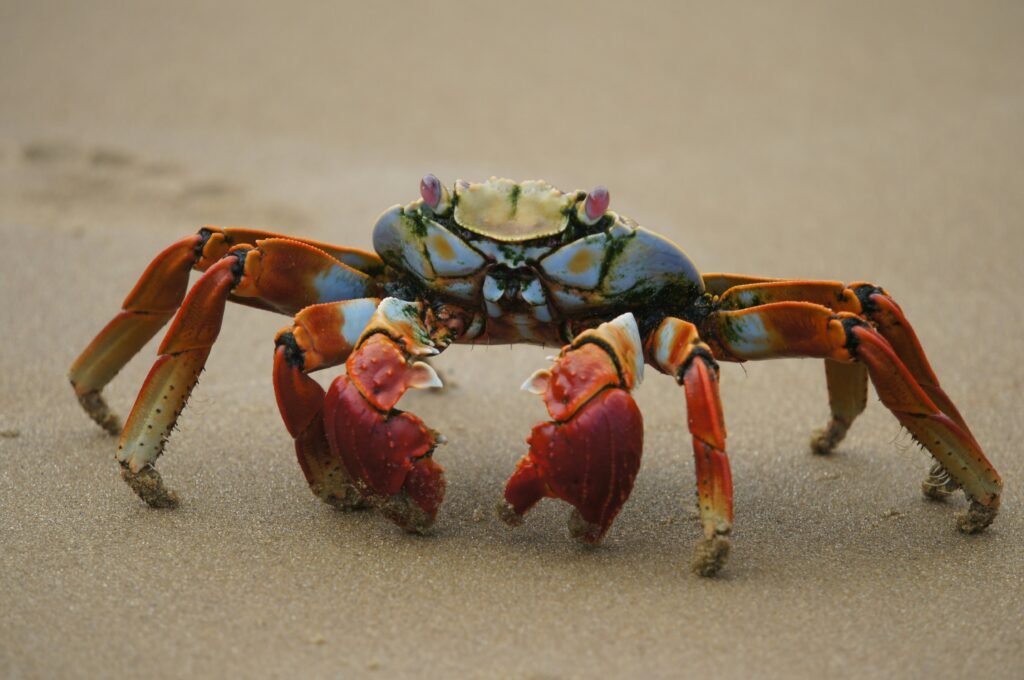Are Coconut crabs edible? 7 hidden facts about them
Unravelling the mysteries of coconut crabs can lead us to intriguing discoveries. These fascinating creatures, known for their impressive size and unique behaviours, often provoke curiosity among adventurers and food enthusiasts alike. This blog post delves into six hidden facts about coconut crabs, including their edibility and other intriguing aspects of their biology and behaviour.

1. What Are Coconut Crabs?
Coconut crabs, widely known as robber crabs or palm thieves, are known as the largest terrestrial arthropods in the world. Found primarily on islands in the Indian and Pacific Oceans, these crustaceans belong to the genus Birgus and are closely related to hermit crabs. Despite their name, coconut crabs do not exclusively feed on coconuts but are opportunistic omnivores, scavenging on various plant and animal matter.
2. Impressive Size and Strength:
One of the most impressive features of a coconut crab is his size. These crustaceans can grow as large as a small dog, with a leg span of over three feet. Their powerful claws, resembling those of a crab, can exert tremendous force, enabling them to crack open coconuts and even climb trees. This remarkable strength is essential for their survival in their island habitats.
3. Are Coconut Crabs Edible?
While coconut crabs are not commonly consumed in most parts of the world, they are considered a delicacy in some Pacific Island cultures. The flesh of coconut crabs is said to be sweet and succulent, with a flavour similar to that of lobster. However, there are concerns about the sustainability of harvesting coconut crabs for food, as their populations are vulnerable to overexploitation.
4. Conservation Status:
Coconut crab face several threats to survival, including habitat destruction, predation by introduced species, and overharvesting for the exotic pet trade and human consumption. In some areas, populations of coconut crabs have declined significantly, leading to conservation concerns. Efforts to protect these unique crustaceans include establishing marine protected areas and regulations on harvesting.

5. Sustainability Concerns:
The question of whether coconut crab is edible raises essential considerations regarding sustainability. While they may be a delicacy in certain cultures, the increasing demand for their meat raises concerns about the long-term viability of their populations. Coconut crab have a slow growth rate and low reproductive output, making them particularly vulnerable to overharvesting. Furthermore, their role in the ecosystem as scavengers and seed dispersers underscores the importance of maintaining balanced populations. Sustainable management practices are essential for safeguarding coconut crab populations while supporting the communities that depend on them. By promoting responsible consumption and conservation efforts, we can ensure that coconut crabs continue to thrive in their island habitats for generations.
6. Unique Adaptations:
Coconut crabs have evolved various fascinating adaptations that enable them to thrive in their island habitats. Their ability to climb trees, aided by their strong legs and claws, allows them to access various food sources, including fruits, nuts, and carrion. Additionally, coconut crabs have a remarkable sense of smell, which they use to locate food over long distances.
7. Mysterious Migrations:
Despite his large size and terrestrial lifestyle, coconut crab can also swim. During the breeding season, female coconut crabs migrate from land to the ocean to release their eggs into the water. After hatching, the larvae develop in the ocean before returning to land as juvenile crabs. This remarkable migration behaviour adds to the intrigue surrounding these enigmatic crustaceans.
In conclusion, coconut crab is a fascinating creature with remarkable traits and behaviours. While they are not commonly consumed as food in most parts of the world, they are considered a delicacy in some Pacific Island cultures. However, concerns about their conservation status highlight the importance of sustainable management practices to ensure their presence for future generations’ study and research.
Read More: Why cats are cute?